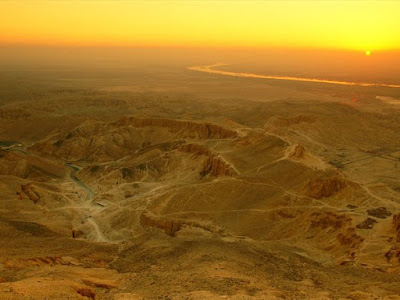 | In 1922, the tomb of Tutankhamun was discovered by British archaeologist Howard Carter. It was in the fall of 1917 when Carter and his sponsor, Lord Carnarvon, began excavating in earnest in the Valley of the Kings. |  |
  | Carter stated there were items bearing the name Tutankhamun - a faience cup, a piece of gold foil, and a cache of funerary items, that convinced him that the tomb had not yet been found. Carter was determined to search down to the bedrock. By late 1922, Carter began his fifth and final season in the Valley of the Kings by having his workers expose the workmen's huts at the base of the tomb of Rameses VI. After exposing the huts, Carter and his workmen began to excavate the ground beneath them. By the fourth day of work, they had found something - a step that had been cut into the rock. |   |
  | Work feverishly continued and 12 stairs leading downwards were revealed; and in front of them, stood the upper portion of a blocked entrance. Carter had discovered an ancient royal Egyptian tomb, one that had lain nearly undisturbed for over 3,300 years. When the boy king was found he rested inside three golden coffins. The first two were carved in wood. The coffin was first overlaid with sheet gold on a thin layer of plaster. Narrow strips of gold, placed on edge, were then soldered to the base to form cells in which small pieces of colored glass, fixed with cement, were laid.The third coffin is 296 pounds (135Kg) of gold. |  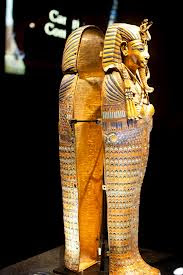 |
 | The death mask is solid gold, beaten and burnished, and was placed over the head and shoulders of Tutankhamun's mummy, outside the linen bandages in which the whole body was wrapped. It weighs about 24 pounds. (10.9kg) The stripes of the headdress are made of blue glass. The vulture's head upon the brow, symbolizing sovereignty over Upper Egypt, is also solid gold, apart from the beak, which is made of horn-colored glass, and the inlay of the eyes, which is missing. By its side is the cobra, symbolizing sovereignty over Lower Egypt, its body made of solid gold, its head of dark blue faience, its eyes of gold cloisonne inlaid with translucent quartz backed with a red pigment, and its hood inlaid with carnelian, lapis lazuli, turquoise-colored glass, and quartz. | 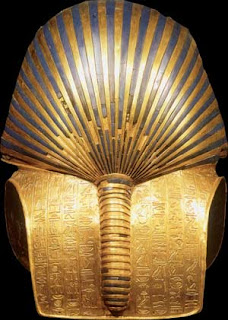 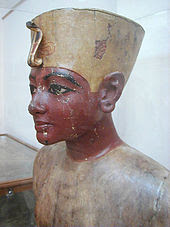 Wooden bust of the boy king. |
 |  |
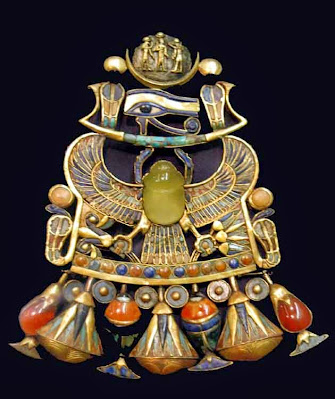 A rebus pectoral scarab worn by King Tut-ankh-amun from Thebes. It symbolizes the birth of the moon and the sun and was part of the king's coronation regalia. |  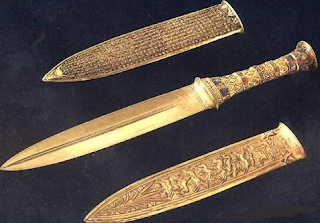 Gold Dagger and Sheath |   King Tut's golden sandals |
 | In 2014 new evidence suggested pharaoh King Tutankhamen was killed by a chariot that smashed his rib cage, shattered his pelvis, and crushed his internal organs, including his heart. After being sealed in his tomb in 1323 B.C. His mummified body caught fire and burned from flammable chemicals that built up in his decomposing body. |  |

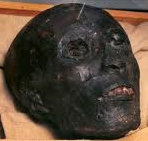




No comments:
Post a Comment